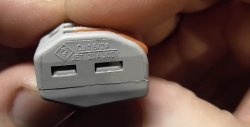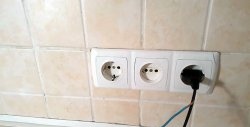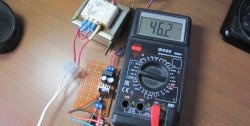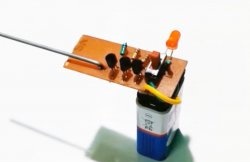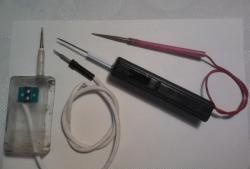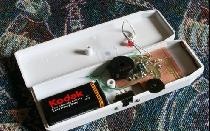Effective protection is possible with a clear understanding of the physical meaning and essence of the “earth” and “zero”, their proper use in practice.
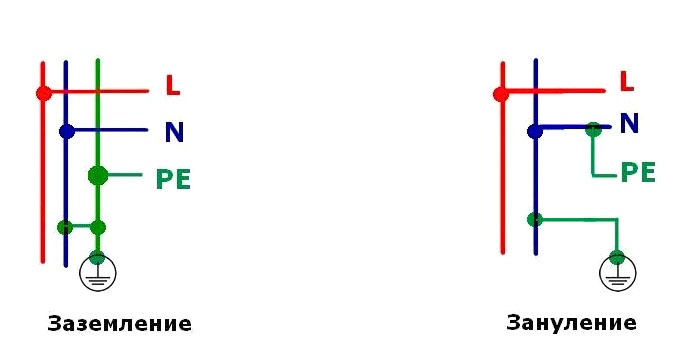
Terms, definitions
To exclude a different interpretation of the concepts of “zero” and “earth”, you need to refer to the established norms and accepted standards. Design, installation and operation are reflected in the main energy management document - Electrical Installation Rules (PUE). Chapter 1.7 of the first section contains complete information about grounding conductors, grounding protective conductors, systems and circuits. Section 3 describes protection and automation schemes. The seventh section indicates how the networks are equipped, including in public and residential premises.
An earthing switch is an circuit artificially made of conductive elements that is in direct contact with the ground.
Neutral is the point of connection together of one of the ends of all phase windings of an AC voltage source (three-phase generator or substation step-down transformer). Under ideal conditions of balanced load, the currents of each phase are equal, mutually compensate for themselves. Therefore, such a point has no potential and is called zero.
Protection consists in creating a physical connection to the conductive parts of the equipment case, which, if the insulation is damaged, can be exposed to dangerous voltages with various points on the network:
- Zeroing - connecting the wire to the neutral. In the event of an accident, the phase closes to zero, causing the circuit breaker or fuse to trip. In the neutral conductor, a current equal to phase flows under load. The insulation of such a wire is blue.
- Protective grounding - connection to the grounding circuit, leading dangerous voltage from the housing to the ground. In the ground wire, current flows only in the event of an accident. It is painted in a yellow-green strip.
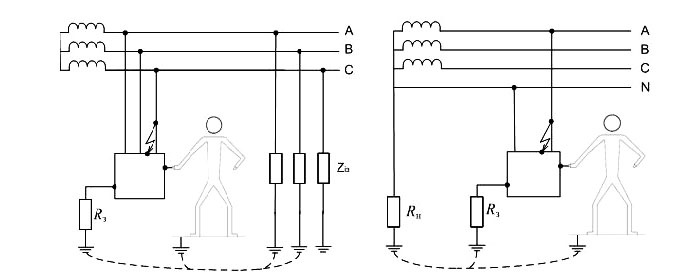
Both connections provide protection. But they implement it in different ways, depending on the location of the connection.
Ways to supply electricity
Electrical installations up to 1000 volts are divided into systems in which the neutral source of energy happens:
- dead earthed when the neutral wire is deliberately connected to the ground electrode;
- isolated from the earth.
Non-industrial consumers are usually powered by a two-wire circuit using two conductors - phase and zero. According to this scheme, all consumers of electricity used to eat before, and now it is permissible only for new buildings that receive electricity through an overhead line.
Current requirements of the PUE dictate the conditions for supplying electricity, using:
- 3 wires - phase (L), zero (N), protective (PE) from the ground electrode for a single-phase network;
- 5 wires - three phases (L1-L3), N, PE for three-phase power supply.
An example is the connection of a residential apartment building to a transformer substation. It is made with a five-core cable. Inside the building, three phases through group switchgears are distributed by three wires to single-phase consumers, evenly distributing the load. This is easy to do on new construction, but wiring is already in existing homes.It is impossible to redo all of it immediately under the new requirements, with the construction of grounding conductors.
Used methods of organizing protection
Many household appliances with three-wire cords and sockets are sold and operated, the grounding of the cases of which is mandatory. Features of the construction of standard power systems used will help to solve this problem if it is impossible to build a separate ground loop for the consumer.
Electricity is supplied to multi-storey buildings of the old construction according to the TN-C-S scheme, when the neutral on the transformer is deafly grounded, with two wires. It is supplied to the panel or cabinet by the PEN conductor, distributed further to groups and consumers along with phase L.
If you need to turn on, for example, a water electric boiler, you must definitely provide protection. If the heater insulation is broken, a leak will occur on the housing, inside of which there is water. The water supply network will be energized. To prevent this, you need to replace the outlet with a three-pin, appropriate plug. From it, bring an additional protective wire of yellow-green coloring to the house entrance to the distribution panel. It is connected under a bolt to the body of the shield, and in the apartment it is connected to the earthing contact of the socket.
It is strictly forbidden to combine the zero and case contacts directly in the outlet.
